
 |
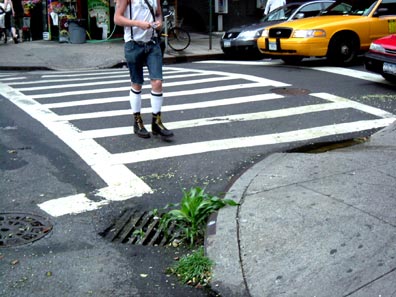
A young stalk of corn has taken root in a sewer grate at East 4th and 1st Ave. Perhaps it is a heroic case of volunteer corn - an ancient residue from the pastoral past of Manhattan.
While it’s too late to be “knee high by the 4th of July,” denizens of our village are doing what they can to help this welcome misfit survive: On occasion, a newspaper rack is strategically placed to redirect unwitting pedestrians around the nascent crop.
This defiant grass, the loving reception it has received and its odd yet natural rooting in the urban environment puts me in mind of Agnes Denes and the two acre wheatfield she planted on the landfill that was to become Battery Park City. That particular field was harvested 24 years ago this month - but its compelling possibility springs forth everywhere - even from trash clogged gutters in the East Village.
 |
 |
|
 |
 |
 |
 |
 |
Seven days in fresh environment absent my traditional cup retrieved the ritual fun from the morning's coffee. Finding new ponderables in the play of figure and ground or, in this case, figure and grounds.
 |
 |
 |
 |
 |
 |
 |
 |
 |
Whilst driving tomato stakes in my host’s garden during the upstate sojourn above, my efforts were frustrated frequently by implacable, defiant stones lacing the soil.
This afternoon episode was enough to trigger the thought: “Might this plot of earth be suitable for the cultivation of the vine? Could this slope possess that ideal melding of clay and schist, some aberrant pocket of kimmeridgian to send grapevines burrowing deep? They grow vines in the Finger Lakes, don’t they?”
Alas, absent some epoch-shaking geological and climactic transformation or, say, genetic engineering - the Catskills are unlikely to be challenging the world’s great wine producing regions any time soon.
That’s not to say that successful wine could not issue from these hills. After all, the historical allure of winemaking resides in coaxing forth the unique characteristics of a particular parcel of soil and sharing its expression via the vinified grape. That’s why sometimes a friend’s backyard wine can be disarmingly moving, it is the taste of the homestead and what a family - sometimes for generations - has used to toast triumphs and drink away indignities.
Winemaking is the articulation of the very ground we walk on - terroir. Or is it?
Mondovino, a new documentary by Jonathon Nossiter, delves deeply into the global reach of world winemaking to address that question. With no narration, the film allows the subjects to tell their own story and, in so doing, pours questions of what constitutes profitable experience right into our wine glass. It outlines the ancient clash of Man with Nature vs. Man over Nature in present terms.
Ultimately, Mondovino weaves the complex, global struggle of our time across a trellis of vines and into an insightfully sweeping opus.
Tantalizing that winemaking can reveal human nature in the same way that wine reveals terroir: At times, the film is like a 1982 vintage, Saint Julien, Chateau Ducru-Beaucaillou, I was recently afforded the astounding pleasure of tasting... downright profound.
 |
 |
 |
 |
 |
 |
The lower right corner photo in today’s post depicts the country intersection of Hurd and West Shore roads as of last month. Thirty six years ago, this junction was the scene of the historic Woodstock concert.
Right now, earthmovers are reshaping Yasgur’s farm into a permanent performing arts center that will play summer host to the New York Philharmonic Symphony - from one long haired music to another.
Alternately urban-expat and pastoral, wild then downright citified, Sullivan County is balancing in-between country and city. It’s become a place where the ground beneath your feet is changing, often literally, right before your eyes.
Addressing this in-between as it pertains to one’s inner life and journey is the focus of a recent book, “The Places That Scare You - A Guide to Fearlessness in Difficult Times,” by American Buddhist nun and writer, Pema Chodron:
“Anxiety, heartbreak and tenderness mark the in-between state. It’s the kind of place we usually want to avoid. The challenge is to stay in the middle rather than buy into struggle and complaint. The challenge is to let it soften us rather than make us more rigid and afraid. Becoming intimate with the queasy feeling of being in the middle of nowhere only makes our hearts more tender. When we are brave enough to stay in the middle, compassion arises spontaneously. By not knowing, not hoping to know, and not acting like we know what’s happening, we begin to access our inner strength.”
Or, as another famous American writer queried during one of our nation’s many transitions, “How does it feel/To be on your own/With no direction home/Like a complete unknown/Like a rolling stone?”
No worries if Buddhist practice is not your cup of tea. Nature delivers to us an unsolicited, tailor-made in-between moment everyday. This fertile hypnopompic state is the topic of poet Wanda Phipps’ newest book “Wake Up Calls - 66 Morning Poems.” Fresh to each morning, she chronicles a spirit emergent from dreaming, born into the unformed day and notes whatever gifts and perplexities arise from the in-between.
Whet your appetite on some of Wanda’s animated morning poems at Mind Honey. In addition to offering her performance schedule and selected works, the site is a good portal to poetry resources on the web.
Sensing the changes underfoot, registering ill-ease or waking to a new morning, we spend a lot of time in the middle - knowingly or otherwise. As Pema says, “This juicy spot is a fruitful place to be.”
 |
 |
 |
 |
 |
 |
 |
 |
 |
A solitary, two week stay in the foothills of the Catskills yields visual input of a particular tone. One delight offered by Jeffersonville, New York, is that - should the spirit grow eager for the region’s tandem soundscape - there is always WJFF.
Some of its best features are the music programs curated by local residents including Dead Air: an educational odyssey of The Grateful Dead’s music and Folk Plus: a lively, first-person survey of contemporary and historic folk music treasures.
Easily one of the best radio stations in the country, WJFF is the only one that is hydropowered. Plus, the station streams online. I guess you could say the stream is stream powered.
 |
 |
 |
 |
 |
Monday’s dismantling commences the recycling of “The Gates” project. For those who witnessed the installation, The Gates’ brief, dazzling existence now blazes as a phantom image in our memory - the way we were those 16 days in February 2005.
During the work’s tenure, I found myself attuned to every appearance of what became Christo and Jeanne-Claude’s saffron: MTA workers on the lines, buddhist meditation centers, street signs, the very ties worn by waiters at Gramercy Tavern, all leapt out as reminders.
 |
 |
 |
 |
 |
 |
I joined many in the City who scrambled up hills and sought communion with friends in skyscrapers neighboring the park in a quest to view The Gates with any approximation of panoramic totality. To take in the full scope of the work, though, one would have to be perched impractically high above Central Park.
The pragmatic mysticism of this drawing for the heavens is its beautiful reality: in order to actually pass through the gates, you must have your feet firmly planted on the ground - the grace of being earthbound and maybe the whole point in delighting in it all.
 |
 |
 |
 |
 |
 |
 |
 |
 |
 |
 |
 |
 |
 |
 |
 |
 |
 |
Seeing “The Gates” is experiential proof that our bureaucratic and political systems can be directed to bring forth delight. The choice is ours.
Christo said years ago at The School of the Art Institute of Chicago that he considers the political and bureaucratic navigation his projects require to be part of the art. I remember that he was especially interested in this aspect of the work: using his brief, inspired follies as a mechanism to place on display the Byzantine functioning of our civic structures. "The Gates" was first proposed to the City of New York in 1979.
As I walked through the park on the installation’s opening day, nearly 30 years later, the communal sense of possibility was palpable and a thrill to share with untold thousands.
What’s more, “The Gates” verifies the cost effectiveness of funding and pursuing delight. The project, which Christo and Jeanne-Claude financed privately, cost around $21 million. Mayor Bloomberg says the city expects the 16 day installation to yield an infusion of $80 million in tourism and other spending, according to the NYTimes. Zero investment with an $80 million return is serious art-as-urban-renewal.
In recent days, I’ve been queried often as to what I most like about it. My response: “That it exists.”
At one point while walking through “The Gates,” I came upon a pathway I’ve walked dozens, maybe even hundreds, of times. Striding beneath the billowing saffron banners, the walk along this gently sloping rise - as it curves around an outcropping of the very schist upon which New York bustles - was newly enchanting.
Christo’s installation removes familiarity from well worn experience allowing for fresh perception. Long after the gates have been removed and recycled, that gently sloping walkway will retain its added element of enchantment - an enchantment that comes from it existing at all.
Christo and Jeanne-Claude’s gift to us is a heightened appreciation for that which we already have.
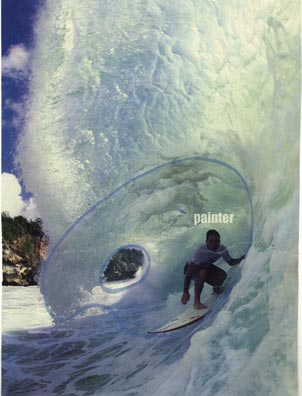
Surfing is an equal opportunity metaphor.
When the creative juices are stirring, the artist rides the wave full-on. The surfer in the Banzai Pipeline articulates the shape and structure of the wave, drawing an utterly unique line composed of the ride. Any painter with brush in hand attempts the same balancing act: lying in wait for the right moment, making a decisive plunge, moving in collaborative sympathy with the wave’s energy all while risking a nose dredging wipe out under foamy mystery.
Surfers plummet into the barrel, the hollow core and emerge exhilarated by an encounter with pure, charged creative force.
For the painter - for all of us, the surf is always up.
 |
 |
 |
 |
 |
 |
 |
 |
 |
This post concludes the Hawai’i Series. My thanks to those people who extended such humbling generosity, vision and hospitality. This place really is a paradise that I never dreamed would be part of my reality.
 |
 |
 |
 |
 |
 |
 |
 |
The day began with a panoramic gaze across the Kilauea Caldera on the Big Island of Hawaii. Rising out of the side of Mauna Loa, the caldera rests at an altitude of 4200 feet above sea level. By some measures, though, we were just shy of the summit of the tallest mountain on Earth.
The island’s rain forest was proving itself aptly described with visibility not more than a stone’s throw. Questing, we began a snaking 12 mile descent down the Chain of Craters Road to find the spot where rangers said lava was flowing to the water’s edge. Along the way, road signs denoted earlier lava flows by date: 1969 - 1974, 1982 and the ongoing eruption which has been flowing since 1983.
Suddenly, still high above the volcanic cliffs and Hawaiian waves, the weather cleared. Before us was an immense coastal lava plain extending to the water and laterally to the horizon.
 |
 |
 |
 |
 |
 |
 |
 |
Volcanologist’s have a glossary of terms to describe the intricacies of their passion similar to the lexicon of Eskimo words for snow.
Kilauea produces two principle kinds of lava. Fortunately, our journey was across pahoehoe (pah-hoay-hoay): sharp as glass but with a smooth, bulbous texture. `A`a (ah-ah) is a jumbled stew consisting of broken lava chunks that result in an incredibly jagged and sharp surface. The right conditions can transform pahoehoe into `a`a.
With no clear path for the three mile hike to flowing lava, we asked the ranger to set us off in the right direction. These were her exact words (accompanied by the wry smile often extended from delighted mentor to embarking pilgrim): "Hike onto the lava and follow the yellow markers until they end. Then, there'll be six orange cones at various peaks. You'll see steam vents along the way. When you get to the end of those, look for heat waves, listen for hissing and popping and go in that direction...you'll find it."
 |
 |
 |
 |
 |
 |
This landscape has the topography of a grade 5 river rapid frozen in suspended animation. It’s like the surface of a giant, flaky brownie. Really, though, it isn’t like anything at all. Volcanoes are originators of both earth and metaphors.
The wind was fierce. The sun was bright. We hiked a healthy quarter mile inland from the coastline, averting the thrilling but structurally unsound lava delta.
Lava travels from the summits of volcanoes through lava tubes with blazes of red occasionally visible though skylights. But when its pressure forces the fluid Earth to meet the air, huge open lava beds can be encountered as it oozes to gravity’s call at the water’s edge.
True to the ranger’s words, as we moved through the silver-black landscape of ropy rock, lava coils and structures evocative of earthen entrails, we began to see little wisps of steam and, eventually, feel gusts of warm, sulfurous wind.
Then, we were upon it.
 |
 |
 |
 |
The mouth gapes. Words fail.
There is no sensical aesthetic or scientific response. I did not feel what is conventionally called awe - with its sense of reverence cut with fear. It was simpler than that.
Love is the most apt description. I felt love.
The lava felt sentient, animate and purposeful. Watching it go about its work, toes crawling across old flows, was fulfilling work itself.
The distinction between animate and inanimate seems arbitrary. Denying rock “animate” or even “sentient” status seems a perverse kind of anthropomorphism - expecting rock to exemplify animation in a manner consistent with human understanding of that attribute. Encountering exposed magma illicits a knowing that precedes all that is human. It made me perceive millions of years as a completely reasonable timespan.
As soon as we turned to start the three mile return hike, I registered a paradigmatic shift in my perspective. Everywhere, the rock I saw - see - bears a latent liquidity. Now and forever, the bedrock upon which this, and every, city rises is liquid rock - but a phase change away.
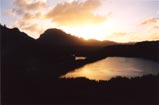 |
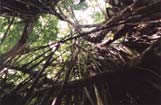 |
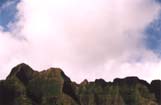 |
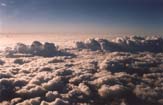 |
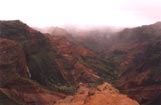 |
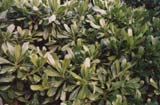 |
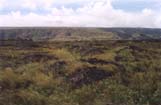 |
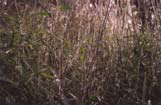 |
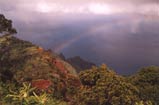 |
Last month, I was wending my way through the grocery aisle when the store’s piped music broke into the familiar opening strums of “A Horse With No Name” by the 70’s folk group America. I quickly reckoned that this same occurrence could be happening in countless, random convenience stops across the country.
It’s just that this one was in a town called Kailua on the island of Oahu...in Hawai’i.
As for many, the song triggers deep memories - delivering me to an ancient time when, curled beneath the covers, I scanned the radio dial for distant stations and news of life beyond the Corn Belt. In the night, an AM radio signal can travel hundreds of miles across the country’s plains. “A Horse With No Name” was a frequent missive.
The journey - free roaming, liberated from language - in joint company with the nameless horse always sang of an Eden that exists over the horizon, beneath one’s feet, somewhere out in America’s mythic Wild West.
Standing in that Hawaiian grocery aisle, I realized I had traveled to a place beyond reach of the nameless horse and even further than the narrator’s imagination could carry him. At the checkout line, after a journey of nine days, the singer was letting the horse run free “cause the desert had turned to sea.”
To my young, landlocked ears this logic had been unassailable. The horse and rider had arrived at the watery edge of the knowable universe and so the trip, and with it the song, comes to a close.
Yet, there they were, riding through the desert on the remotest archipelago on earth. That bodega at that moment seemed beyond reach of even the strongest AM radio signal in the deep of the night.
Hawai'i is like that. One arrives with that confident certainty of what constitutes The World only to learn that in a place where the newest earth in all creation issues forth, there is no knowable universe only “plants and birds and rocks and things.”
 |
 |
 |
 |
 |
 |
 |
 |
 |
Today's post is the final group of photographs from my recent trip to Southern California -
While traveling, I picked up Christopher Ricks' new book "Dylan's Visions of Sin." Ricks is the newly elected Oxford Professor of Poetry. He has a shelf worth of books to his credit including analyses of the works of Milton, Keats, Tennyson, Beckett and T.S. Eliot. Here, he accords Bob Dylan's lyrics the kind of respect and investigation given those earlier masters.
It is a thrilling read and a great traveling companion.
My return from California shortly preceded the Republican convention here in New York. While the GOP was meeting inside Madison Square Garden, it was apparent that there was another convention, often described as a "protest," taking place outside in the streets and parks. I would imagine this dynamic, though I can't speak from firsthand experience, bore similarities to the times of the 1960's when Dylan's cultural impact was at its apex.
How does an artist function in a polarized atmosphere?
In "Desolation Row," Dylan slyly references the title of a traditional folk song, singing:
And everybody's shouting
"Which Side Are You On?"
From page 30 of "Dylan's Visions of Sin," Christopher Ricks:
Dylan didn't like to bad-mouth a song that was in a good cause. But he knew, even back then in 1963, that this "two sides" business was averting its eyes and its ears from too much. So before long he was hardening his art.
[In a 1966 Playboy interview, Dylan says:] "Songs like 'Which Side Are You On?'...they're not folk-music songs; they're political songs. They're already dead."
[Finally, an exchange found in "Bob Dylan in His Own Words" from December 16, 1965:]
Q: What does the word protest mean to you?
A: To me? Means uh...singing when I don't really wanna sing.Q: What?
A: It means singing against your wishes to sing.Q: Do you sing against your wishes to sing?
A: No, no.Q: Do you sing protest songs?
A: No.Q: What do you sing?
A: I sing love songs.
 |
 |
 |
 |
Considerations of possible titles for this post included: "Positive Negative Space," "Nature's Origami," and, from the Joshua Tree National Park Service Cholla Cactus Garden literature, "Self-Guiding Nature Trail." In the end, though, as is so often the case, the images best speak for themselves.
 |
 |
 |
 |
 |
 |
 |
 |
 |
 |
Just returned from a trip to Southern California -
If it's contemplative space and cultural remove you seek, there's nothing like a trip to the desert in the middle of August. Anza Borrego can yield temperatures in excess of 124º F in the summer, limiting human contact to the hardy and the foolhardy. Plainly, the desert can really play with your sense of scale.
More desert posts ahead...